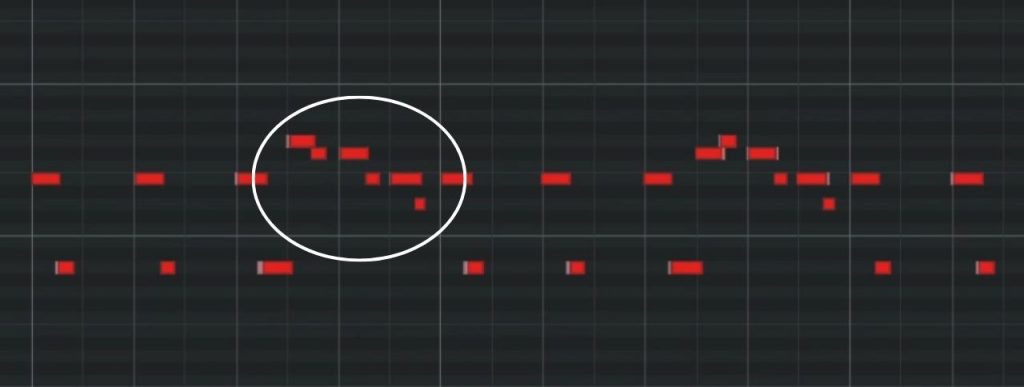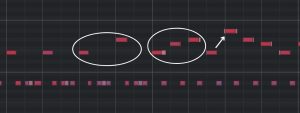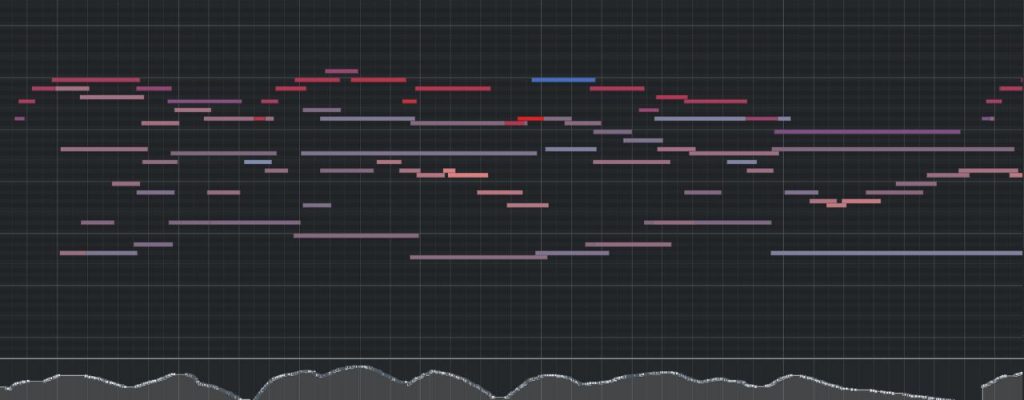How to Sound like Two Steps From Hell
Two Steps from Hell and, more specifically, Thomas Bergersen are the grandmasters of epic music. We can hear their music in about every trailer, TV show, and any piece of media you can imagine, so they must be doing something right. To learn a thing or two about their orchestration, composition, and mixing techniques, I decided to recreate one of their tracks in Cubase. Completely by ear. While there were parts that were a downright pain to figure out (Yes, high string line at 1:47, I’m looking at you), I ultimately learned an immense amount while doing this. Here is an overview of the main lessons I learned and how you, too, can learn to sound like Two Steps From Hell.
1. Layers, layers, layers
You’ll need layers to sound like Two Steps From Hell and Thomas Bergersen. Multiple layers of sounds, instruments, and sample libraries. You can add layers for one of 3 reasons: Body, color, or effect.
1. Body
One way to increase the body of something is to take the fader and jolt it up. But sometimes, it can help to have multiple layers of the same, or even different instruments, to increase the volume of said instruments. In this track, I mostly did this for the brass. There are often 3 sample libraries and multiple different patches playing simultaneously to create this big, fat brass sound. Don’t layer everything all the time but pick and choose where you want how many libraries to sound.
2. Color
Layering for color means layering multiple instruments or libraries to achieve the color you want. Woodwinds doubling strings ostinatos for some extra flourish, for example, or low basses doubled by bass trombone for that brassy sound. In the middle section, there’s a large, deep-sounding snare drum ensemble sounding in the original. I tried every snare sample I own, but I never seemed to get them to sound right. They were either too close, too tight, or even too deep. In the end, I layered in some drumline tenor and bass drums to add a deep, open sound to the snare ensemble. When everything is playing together, you don’t recognize them as being tenor or bass drums, but together they add just a touch of a deeper sound that I was missing from just the snares.
3. Effect
Sometimes you’ll have to combine the strengths and weaknesses of different sample libraries to create a specific effect you want. To do this, it’s essential that you know your sample libraries and what they can do, so you can insert those specific elements when you need them. For example, the opening string rhythm is very exposed. Performed live, the players will go up and down over the string, but most sample libraries have separately recorded short notes. As a result, it is tough to achieve this effect. So to get as close to it as possible, I layered three different libraries:
- Cinematic Studio Strings does the heavy lifting (as it always does in my music). The measured tremolo is one of my favorite patches. It ensures you will at least have two notes recorded together. I alternate between the measured tremolo and regular short notes.
- Metropolis ARK I adds some aggressive bite to the high strings.
- East West Hollywood Strings has a patch that is a short note with a more extended character. It’s not an accent but a short note that almost connects to the next one.
Together, these three libraries created a sound that I really liked and that would not have been possible by using only one of these libraries.
2. Developing Ostinatos
One of the things that always struck me about Two Steps From Hell is how interesting their ostinatos are. An ostinato is a repeated figure that often adds drive and embellishment to a track. In this particular track, it’s fascinating to see how Thomas develops his accompanying ostinato figures. Let me take you through the whole thing and see what is happening.
Building Blocks
In the opening, we start with the strings doing a figure with a jump and repeating notes. Still very simple and not too distracting. However, if you listen very closely to the track, there is this one extra line in the woodwinds, and I decided to play over this whole opening. The core feature of this line is at the end of the bar, where we have a long-short alteration. I call these two elements Cell A and Cell B. These are the main building blocks of the other ostinatos throughout the piece.


During the first minute or so, Thomas uses Cell A for the ostinato figures. However, when we approach a new section, new material leads us into the next one. We can trace this new material back to Cell A, causing the transitions to develop naturally from the previous material.

The end of the last bar is repeated but sped up with one note in between, creating a melodic figure in the top notes. He repeats the jump from the last note up, which was a core feature of Cell A. This new melodic figure reminds us of the original cell, but the middle notes have moved up to form a descending line.

The descending line from the previous transition comes back, and the jump in the end remains. Thomas repeats by going up an octave, adding a second voice, and doubling in the woodwinds.
Combining Cells A & B
From this moment on (1:08), it starts to get interesting. Thomas starts developing and combining cells A and B to come up with new ostinato material. The development begins by moving the third note of every group of four down, creating an alternating figure in the lower notes (A’). The overall contour of the cell stays the same, though.
The following bar contains Cell B, creating a downward motion that lasts for the entire bar.
Thomas closes the ostinatos in this section by playing Cell A over the last two bars. It is noteworthy that he chooses not to develop the ostinato in the buildup but instead lets the other instruments of the orchestra create the transition into the next section. Again, this is a variation in how he composes his transitions compared to earlier parts of the piece.

Going crazy!
After a couple of bars without ostinato figures, things start to get crazy. The notes are going all over the place, and cells A and B have entirely merged. The start of every group of four notes has the long-short character of the B-cell embedded into them. We can relate those four notes to the A cell, with only the last note alternating. B is more prominent in every third and fourth bar, and the lines are more melodic, going in an ascending figure.
The second half of this section has the same principles applied, but now the jumps are even crazier and carry over into the third bar this time as well. Only the very last bar now only consists of B-cell material.
We could consider this section as the point where cells A and B have wholly merged. The development up to this point has gone entirely natural, and Thomas introduces his building blocks one by one and slowly combines and develops them until this moment. The ostinato figure is completely crazy but still grounded in the same building blocks we hear throughout the piece.

3. Background Filler
Very often, when I thought I was done with a section and was listening back to the original, I felt like my version still lacked some power. I had a massive hole in the mid-range of the orchestra between the melodies and ostinatos up top and everything happening in the low end. At this moment, my attention turned from the prominent lines to material that was only barely audible. And it was this material that was happening in the background that added a lot more power to the whole arrangement.
This concept is so broad that you can achieve it in many different ways. In this track, some examples are rhythmic open string chords, additional choir, and brass orchestration added to a tapestry of string lines. The main takeaway is that the orchestration of the music of Two Steps From Hell is generally very dense. We have to layer sample libraries and instruments for body, color, and effect, and we’ll also need to think about what happens behind the most prominent lines. It is about the idea of creating an additional layer in the background that creates resonance, depth, and body to the orchestration. Two Steps From Hell are the masters of adding layers we can barely hear but will miss when they’re not there.
Two Steps From Hell are the masters of adding layers we can barely hear but will miss when they’re not there.
4. Multiple Voices
Two Steps From Hell use multiple voices in two different ways. They add harmonic voices for extra power and melodic voices (counterpoint) to add life and density.
1. Harmonic Voices
To make something feel more powerful, you can add multiple voices to a melody, ostinato, or accompanying figure. Adding a second voice gives it more strength and color and makes something stand out more. The horn call at 0:39, for example, would lose a lot of its power and impact if you only leave the top notes of the melody. A similar thing happens in the doubling of the trumpet melody at 1:14. The main line is the top one, but the middle voices, especially in the supporting woodwinds, add some color to the phrase.
2. Counterpoint
Counterpoint is a great way to add life and density to your compositions. It can enhance a simple melody into a fascinating, colorful phrase that breathes and moves in the entire orchestra. In this track, the best example of this is the lyrical section. (Almost) every string instrument here is not just playing chord tones, but each has a unique melody that makes sense horizontally and vertically. A brass and choir background supports this dense tapestry of notes and gives resonance and support to the whole section. By having these multiple lines going against each other, Two Steps From Hell create a section that is teeming with life. Every beat has a new suspension or resolution, ensuring the music is always moving forward and never grinds to a halt.

5. Rock Harmony
Two Steps From Hell often fuse all musical styles into epic orchestral music with great success. This notion became very clear when recreating this track in Thomas’s supporting harmony.
The harmony is actually quite simple. The melody, bass lines, and ostinatos often take up the whole scale twice and back. What is supporting that, however, is mostly power chords. A power chord is something we often hear in rock or punk music and is a chord that consists of the root and the 5th. Very open and very powerful (hence the name). In most sections where a lot is going on, the harmony is mostly the bass note with the 5th added. Movement usually fills in the other chord tones in the upper voices rather than harmony. Using this simple chord structure creates a robust foundation for all the craziness happening in the higher registers and leaves room for this craziness to fill out the other notes of the chords and scales.
Conclusion
The music of Two Steps From Hell is loved worldwide, and rightly so. They create massively complex tracks, blending many different musical styles into an orchestral genre that moves beyond boundaries. As a composer, I love their music, diving into it and analyzing what is happening. I will take these five lessons with me in my writing, and I hope they have inspired you to do the same.
If you’d like more detail on the points described above, including some bonus lessons, don’t forget to check out the YouTube video I made on this subject.
Any questions on this topic? Feel free to get in touch!
